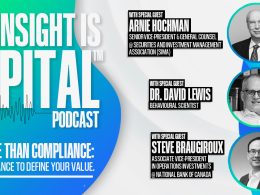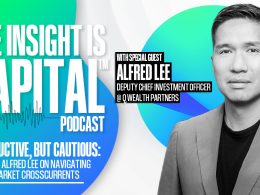Beyond the Basics: Strategies for Multigenerational Planning
by Whitney Drechsler, JD, Commonwealth Financial Network
In the next 30 years, approximately $40 trillion will pass from the baby boomers to future generations. Given this sizable transfer of wealth, successful advisors must be equipped to counsel not only their existing clients, but also their clients’ children, grandchildren, and even parents. With this in mind, let’s take a closer look at strategies for multigenerational planning, plus how to go beyond the basics in meeting the financial goals of individuals across generations.
A good place to start is by identifying which of your existing clients represent wealth-transfer planning opportunities. Once you’ve compiled your list, perform a review of their financial snapshots. This should go beyond investment goals, financial objectives, and traditional “money management” into the clients’ long-term goals with regard to their families.
Here, it might help to create a multipoint financial plan that looks at:
- Estate planning, including wealth transfer and legacy concerns
- Tax planning
- Charitable goals
- Retirement plan success
- General financial planning (e.g., analysis of the family’s assets, net worth, sources, and types of income)
- Business succession planning (when applicable)
The documents most useful in crafting each analysis are:
- A copy of the estate plan
- Net-worth statements
- Account statements
- Recent tax returns
- Retirement plan documents
- Social security information
This information should guide you to the issues most relevant to each client and how to implement strategies to get a wealth-transfer plan in place. Keep in mind, though, that you’ll need to go beyond these documents to talk about each client’s thoughts and feelings, as well as his or her intentions for the future. By asking questions, you can gather a great deal of knowledge, including insight into the client’s family dynamic.
Now, it’s time for these clients to think about what comes next. To coach them along, have clients ask themselves the following:
- What do I want to leave behind?
- How do I want my wealth to affect my children’s lives? My grandchildren’s lives?
- What degree of control do I want after I’m gone?
The transfer of wealth almost always involves a client’s estate planning documents. A thorough review of the estate plan will help you understand the client’s intention and the planning in place to help achieve that intention. A necessary task is to look to distribution language in the trust or will, ensuring consistency with beneficiary designations.
Where the estate plan is not consistent with the financial plan—or the stated wealth-transfer goals—an opportunity exists for you to bring these matters in line with one another. If you haven’t done so already, educate yourself on the basic components of common estate planning techniques for transferring assets or wealth to other generations, including family limited partnerships and other family business entities, complex irrevocable trusts, and lifetime gifting strategies. Equipping yourself with this knowledge will allow you to recognize the facts that fit a planning opportunity, educate each client on the strategy, and further suggest how a sophisticated money-saving technique or strategy suits a client’s plan.
Once you feel that you have thoroughly counseled your boomer clients on how they can transfer their wealth in the best way possible, your job shifts to the next generation. Whether it’s Gen X, millennials, or the generation to come, the topic of conversation will change almost entirely. There will be different investment goals because these clients will likely be in the wealth accumulation phase. Here, your role will be largely rooted in education.
This may be as simple as providing resources and education in financial planning. Teaching your youngest clients basic budgeting and personal finance skills will be integral to the next generation’s ability to receive sudden wealth and to plan accordingly for the future. One topic where the education component will be especially relevant is the legacy plan.
Many families who have legacy plans in mind look to charitable planning for both their philanthropic goals and their financial benefit. A donor-advised fund (DAF) in the family name is a great way to spread philanthropy throughout the generations. Naming younger generations as successor grant advisors for the DAF furthers that intent. Here, you can emphasize the family DAF concept to instill the importance of charitable giving in the next generation. This can also serve as a teaching moment for the children and grandchildren in learning how to manage and distribute money from a charitable account.
Ask for an introduction. The final step will be for you to craft the value-add that will set you apart from the competition: where can you make the biggest impact for this family? To stress continuity and consistency in the family’s plan, ask for introductions to family members early on in the client relationship. This offers the opportunity to forge a stronger relationship during each subsequent meeting. You will soon find yourself positioned as a true multigenerational planner.
Create an open, comfortable environment. Counseling multigenerational families requires a great deal of trust among all parties. As such, be sure to create an environment that is open, honest, and comfortable. It should be one where all issues—even the contentious ones—can be discussed and resolved. You might offer a luncheon for the family or set up a meeting in your office, well in advance, to provide a neutral location for the family to gather and discuss sensitive issues. Help erase some fears surrounding conversations about end-of-life issues by explaining the importance of planning for the eventual passing of the torch. These discussions are necessary and should be approached delicately but steadfastly.
Look around—and listen! The one-size-fits-all approach for clients is obsolete in the multigenerational planning space. Family dynamics, contentious relationships, and general banter are all things you are likely to encounter. Be an active listener. Find out what is important to the family and what drives the group.
The benefit for you lies in the relationships that build the bridges between family members—and, ultimately, the retention of existing assets under management. What this means for clients is a streamlined transition of wealth and goodwill from one generation to another, with your expertise serving as the guide.
I think you will find that the role of the multigenerational advisor generally boils down to two areas: guiding existing clients on the most tax-advantaged ways to pass along wealth in line with their current goals, as well as educating the younger generations on the potential for sudden windfalls and on how to be prepared ahead of time. The strategies discussed here will help you be successful in this twofold role—and to grow not only your business but also the personal relationships that help your business thrive.
What other strategies do you employ as a multigenerational advisor? How do you build relationships with clients' family members? Please share your thoughts with us below!
Commonwealth Financial Network is the nation’s largest privately held independent broker/dealer-RIA. This post originally appeared on Commonwealth Independent Advisor, the firm’s corporate blog.
Copyright © Commonwealth Financial Network
















